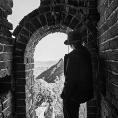Using M246 w macro, rather than scanner for Film
-
Recently Browsing 0 members
- No registered users viewing this page.
-
Similar Content
-
- 1 reply
- 278 views
-
- 6 replies
- 411 views
-
Film / Handgepäck-Scans an Flughäfen mittels CT-Scanner und herkömmlichen X-Ray-Scanner
By Andreas_Kreuz,
- 2 replies
- 666 views
-
- 42 replies
- 5,032 views
-
- 11 replies
- 1,919 views
-



Recommended Posts
Join the conversation
You can post now and register later. If you have an account, sign in now to post with your account.
Note: Your post will require moderator approval before it will be visible.